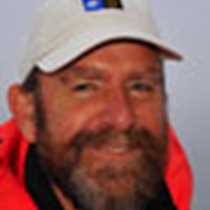Elephant Island
A day of wonders! Wonder One: that, like Shackleton in his three tiny whaleboats, we have made it safely to Elephant Island. This forbidding lump of jagged rock and ice was Scene Two, Act One in the great Shackleton saga. Our approach was to the southern tip, Cape Lookout, named by the first sealers in the 1820s, and Expedition Leader Tim set out to gauge our chances of a landing. 9 times out of 10, even chancing an attempt on this wave-battered coastline is out of the question.
Wonder Two was that the sea was just (but only just) calm enough to try, and by surfing through a narrow channel between a rock and a hard place, we found the perfect, sheltered cove.
Wonder Three was the wildlife spectacle ashore: a wild, snow-spangled bay with clattering Chinstrap penguins upslope, nesting snowy sheathbills under boulders, sparring fur-seals wrangling on the beach-crest and a haulout of 20 massive elephant seals (from which the island first took its name). Several hundred pintado petrels were pecking and paddling in the breaking waves, gorging on plankton bunched inshore by wind and waves. The return trip to the ship was a test of our versatile Zodiac fleet and their intrepid drivers, unfazed by lurching swells and an impressive rise and fall alongside.
Wonder Four was the way the sky rolled back to spotlight Cape Valentine in glorious sunshine. Our fifth day of sunshine!! This is the site of Shackleton’s first miraculous landfall, after 497 days adrift on ice and ocean, at the eastern tip of Elephant. Their state of desperation was such that they greeted this barren wilderness of tumbling white glaciers and storm-lashed black crags as their salvation. National Geographic Explorer crept carefully into the bay of Point Wild and anchored close enough for us to launch Zodiacs a second time. We came alongside the unforgiving spit of land where they made their final camp, in which 22 men, under the inspired leadership of Frank Wild, survived the four months of a second savage winter, clinging to the hope that Shackleton in the tiny boat James Caird would make it across 700 miles of the worst seas to bring rescue. They were not disappointed; after trials which would have defeated any lesser man, he returned 128 days later to bring them all to safety. This is one of the greatest stories of faith, leadership and dogged human survival. Inspired by the tale, and glowing with our own paltry achievements, we set off out to sea, only to stumble on Wonder Five: a sea full of blowing whales from horizon to shore: racing fin whales in the offing, but right close, right now, right whales!
This was the most exciting moment of the day, for this creature, the Southern Right whale, the first to be wiped out by the whalers and the last to recover, was right alongside our ship. Four animals had been romping just off the coast and one turned and came right to the bow, surfaced repeatedly under the lee rail, and finally raised a massive tail in salute, returning to the depths to resume its banquet of copepods which swarm in this bountiful ocean.
A day of Five Wonders in this wonderful, wild, windswept world of Antarctica.




